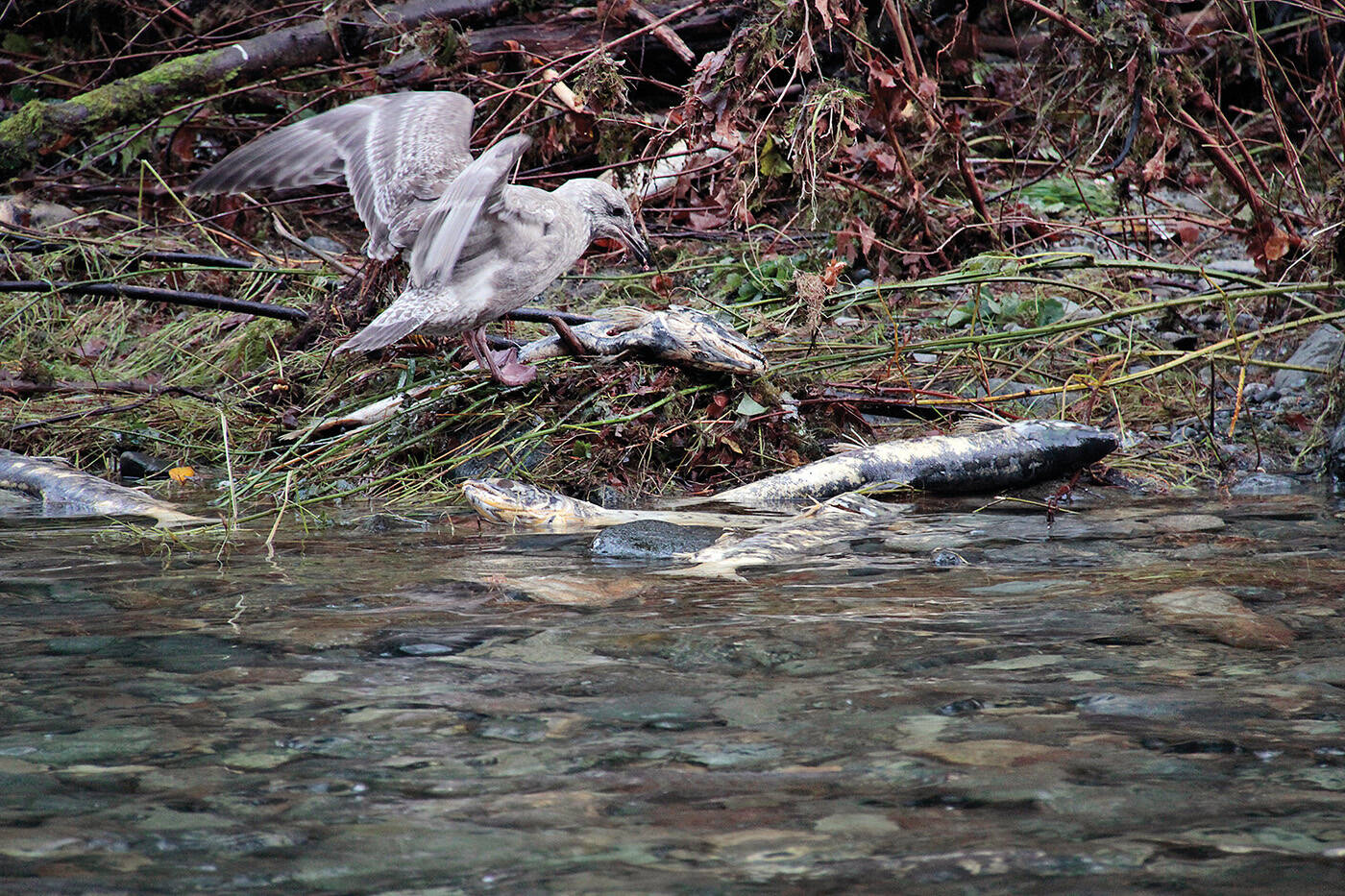Chum salmon runs were hit hard this year, by first drought and then flooding, with their numbers decimated in the face of extreme weather.
That’s according to Peter McCully, a technical advisor for the volunteer-run Goldstream Hatchery who also works with the Department of Fisheries and Oceans. The hatchery had projected 20,000 chum would enter the river this year. They saw about 4,000.
“The drop was precipitous and we’re all sort of scratching our heads – why is that?” he said. “Because other species like coho and chinook did appreciably well.”
There are a number of factors, McCully said. Higher water temperatures, not just in the rivers but offshore in the Pacific Ocean, have changed a lot of things, from the quality of food chum are getting to the number of predators in the same waters. Coho and chinook salmon, which stay closer to shore than chum, are less impacted. Not only are less chum returning to spawn, they’re also smaller.
READ MORE: VIDEO: Goldstream salmon swim beside picnic tables amid surging stormwaters
While salmon species in the area have somewhat adapted to the seasonal shifts in water levels and temperatures, changes between summer and fall are becoming more extreme, said Bethany Coulthard, a University of Nevada hydro-climatologist who lives and works in Shawnigan Lake.
“We are getting to the point where species probably aren’t able to cope,” she said. “They can’t be resilient to the level of extremes that they’re facing under climate change now.”
While there are a number of long-term impacts, one of the most pressing may be the damage the flooding caused to river habitat, McCully said.
The impacts of November’s heavy rains were spread throughout the province and affected a number of salmon spawning beds. But the Goldstream River may have it worse, he said.
The additional water flows washed away large amounts of gravel, which salmon depend on to form nests and lay their eggs. McCully said it’s a particular problem because the Goldstream River is fed by a reservoir, which doesn’t gradually supply the river downstream with more gravel.
The gravel could be replaced, but it would take a lot to rebuild the riverbed habitats, he said.
“So much of it is left up to mother nature too, but I don’t think the different government agencies really have a handle on the scope of the damage. It’s going to take years to rectify it.”
@moreton_bailey
bailey.moreton@goldstreamgazette.com
Like us on Facebook and follow us on Twitter.

